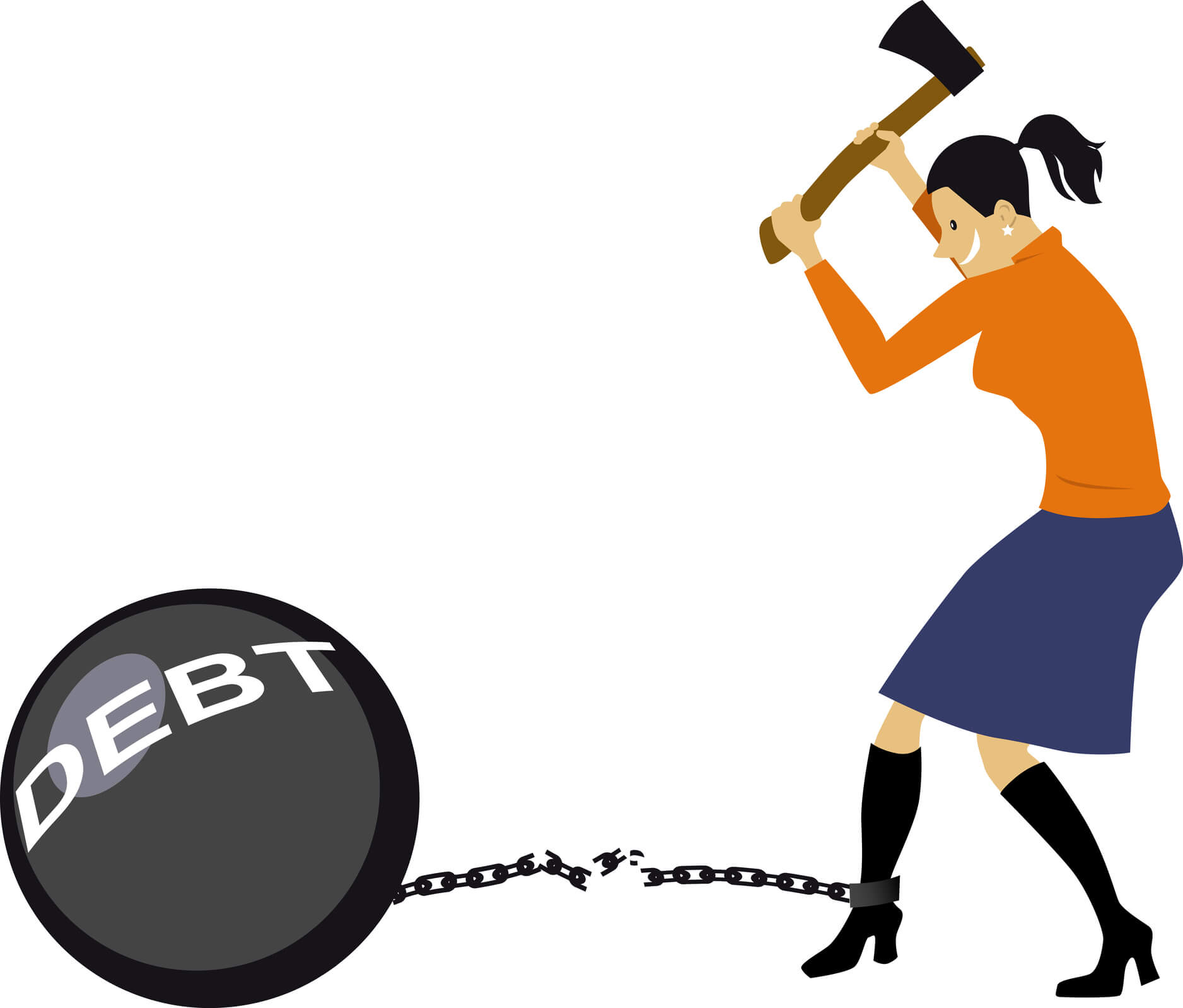Debt avalanche
The debt avalanche approach makes minimum payments on all your outstanding bills and then applies any remaining funds intended for debt repayment to the account with the highest interest rate. You will save money on interest payments using the debt avalanche strategy.
An example of a debt avalanche
The debt avalanche strategy, for example, will get your money to go the furthest if you have an extra $3,000 to pay off your debt each month. Assume you owe the following amounts:

- A $10,000 credit card debt with an annual interest rate of 18.99% (APR)
- A $9,000 auto loan at a rate of 3.00% per year.
- A $15,000 student loan with a 4.50% annual interest rate
The avalanche technique requires that you pay off your credit card debt first, then pay off the remaining amount in 11 months, paying $1,011.60 in interest. The snowball strategy requires you first to take out a car loan, paying $1,514.97 in interest and being debt-free after 11 months.
You can save hundreds of dollars in interest by just rearranging your debts. The avalanche strategy can also cut the time it takes to pay off the debt by several months for people who have a lot of it.
Advantages & Disadvantages of the debt avalanche method
The debt avalanche method also presupposes that you have a set amount of discretionary income to pay down your debts. An increase in everyday living expenses or an emergency could throw the plan off.
Pros
- Decreases the amount of interest you need to pay
- Reduces the amount of time it takes to pay off deb
Cons
To cope, you’ll need discipline and determination.
It is necessary to have a consistent source of discretionary income.

Debt snowball
The debt snowball method is paying off the lowest bills first, then moving on to larger ones—a “do the easy work first” strategy. You list all your outstanding debts in ascending order of size. You get to select who plays first, and you can put as much money into each payment as you like. You only must pay the bare minimum for the remainder. Once the initial loan has been paid off, you go to the next most excellent debt to make extra payments.
An example of a debt snowball
Let’s use our prior debt scenario to demonstrate how the snowball effect works. As a reminder, you have an extra $3,000 per month to pay down your debt and the following options:
- A $10,000 credit card debt with an annual interest rate of 18.99%.
- A $9,000 auto loan at a rate of 3.00% per year.
- A $15,000 student loan with a 4.50% annual interest rate
Because you owe the least amount of money on the auto loan, the snowball method will push you to focus on it first. You’ll finish this in three months and then move on to the other two. You’ll be debt-free in roughly 11 months, like the debt avalanche approach. However, you’d have to pay $1,514.97 in interest, nearly $500 more in total.
45.4 percentage point
According to Value Penguin research, the percentage of American households with credit card debt.
Pros and Cons of the Debt Snowball Method
Pros
- Creates motivation by quickly paying off debts
- Easy to implement
Cons
Debt consolidation
Financial consolidation allows the borrower to modify the contract’s conditions and reduce their debt burden. You can use this service if unexpected expenses arise. In Western countries, it is popular. Consolidation is combining many credit accounts into one to pay off debt. A lower interest rate is applied to such obligations, reducing the borrower’s debt burden. A single account is also helpful for the following reasons:
- It is easier to manage.
- Depending on his financial situation, a debt repayment scheme is developed for a specific client.
- You can attract co-borrowers, collateral, and transaction guarantors.
- the credit rating rises as the number of regular payments decreases
- The total amount of monthly payments are reduced.
- Fewer funds are spent on commissions for servicing several bank account transactions.
- Service in one financial institution.
- Upon successful completion of the program, credit history improves.
In most cases, financial managers create a debt consolidation plan. They visit with the customer, discover the reason for the loan agreement’s non-performance, and determine how the client can return the debt.
 About Complete Controller® – America’s Bookkeeping Experts Complete Controller is the Nation’s Leader in virtual bookkeeping, providing service to businesses and households alike. Utilizing Complete Controller’s technology, clients gain access to a cloud platform where their QuickBooks™️ file, critical financial documents, and back-office tools are hosted in an efficient SSO environment. Complete Controller’s team of certified US-based accounting professionals provide bookkeeping, record storage, performance reporting, and controller services including training, cash-flow management, budgeting and forecasting, process and controls advisement, and bill-pay. With flat-rate service plans, Complete Controller is the most cost-effective expert accounting solution for business, family-office, trusts, and households of any size or complexity.
About Complete Controller® – America’s Bookkeeping Experts Complete Controller is the Nation’s Leader in virtual bookkeeping, providing service to businesses and households alike. Utilizing Complete Controller’s technology, clients gain access to a cloud platform where their QuickBooks™️ file, critical financial documents, and back-office tools are hosted in an efficient SSO environment. Complete Controller’s team of certified US-based accounting professionals provide bookkeeping, record storage, performance reporting, and controller services including training, cash-flow management, budgeting and forecasting, process and controls advisement, and bill-pay. With flat-rate service plans, Complete Controller is the most cost-effective expert accounting solution for business, family-office, trusts, and households of any size or complexity.





